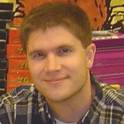In the past decade it was demonstrated experimentally that negatively-chirped laser pulses can lower the surface LIDT for wide band-gap materials by decreasing the number of photons required for photoionization on the leading edge of the pulse. Similarly, simulations have shown that positively-chirped pulses resulting from selffocusing and self-phase modulation in bulk dielectrics can alter the onset of laser-induced material modifications by increasing the number of photons required for photoionization on the leading edge of the pulse. However, the role of multi-chromatic effects in free-carrier absorption and avalanching has yet to be addressed. In this work a frequency-selective model of free-carrier dynamics is presented, based on a recently extended multi-rate equation for the distribution of electrons in the conduction band. In this model free-carriers gain energy from the field by single-photon absorption at the instantaneous frequency, which varies as a function of space and time. For cases of super-continuum generation it is shown that a Drude-type absorption can vary from 50% to over 200% the absorption rate as evaluated at the central pulse frequency only. Simulations applying this model to ultrafast laser-plasma interactions in fused silica explore how pulse chirps may be used as a distinguishing parameter for LID resulting from otherwise identical pulses.
- Absorption,
- Dielectrics,
- Electrons,
- Laser induced damage,
- Lasers,
- Modeling,
- Modulation,
- Photons,
- Plasma,
- Silica
Available at: http://works.bepress.com/jeremy_gulley/5/
